Leveraging the power of your influence to shape the future
Though at times it can feel frustrating and may even cause some discomfort, the hard truth is that tourism leaders are rarely fully in control. Sure, there are degrees of control depending on the circumstances or matter at hand, but in today’s increasingly complex industry environment where greater and more nuanced collaboration and partnership is required, full control isn’t likely.
Every tourism director is experiencing new levels of complexity as they continue rebuilding from the pandemic and do the hard work of reimagining the role of tourism in their state. So many difficult, seemingly impossible social issues are rapidly converging and eagerly awaiting every leader’s attention. Things like labor shortages, access to affordable housing, transportation and infrastructure, climate change, and safety to name a few. The list is long. And despite the uncertainty that comes with knowing we’re in entirely new territory, where so many interests need to be considered as part of the process of creating tourism strategies, two things are abundantly clear: the work ahead can only be done in partnership with others and sitting on the fence is not an option.
Destination organizations and their leaders worldwide are embracing a new level of responsibility. A higher calling and a greater sense of purpose is driving new energy and inspiration for what’s possible. As a result, a new standard for what successful tourism programs look like and feel like is emerging. And while performance metrics like visitor volume, occupancy and economic impact remain important, it’s also clear that these alone can no longer be the only measures of success.
The decisions tourism leaders make as industry influencers impact residents, the communities they live in and the natural environment and cultural resources they desire for generations to come. This reality requires something very different from all destination leaders and their organizations and has presented an important question:
How can I maximize my impact when I’m not in control?
As you imagine the future and the evolving role of tourism in your state, you might be scratching your head and times wondering how you’ll lead the way when so much of what needs to get done is outside of your control. At times you might feel a bit lonely or vulnerable, and for good reason. A lot is at stake. Through it all, it’s important to remind yourself that while the work ahead will take time and much of it won’t be easy, the journey—and the many twists and turns it will likely take—will be well worth the reward.
Regardless of where your tourism program is currently situated in your state—whether you’re currently operating more as a Destination Marketing Organization, a Destination Management Organization or well on your way to becoming a Destination Stewardship Organization, consider the following as you move forward:
Inspire followership
Leadership is and always will be the byproduct of influence. And to be truly influential, you must believe (fiercely) in what you’re attempting to achieve. As the late Ruth Bader Ginsburg once said, “Fight for the things that you care about and do it in a way that will lead others to join you.
Re-thinking the operating system for an entire industry is not for the faint of heart. In many ways evolving the role of tourism is like starting a movement. A movement can’t sustain itself unless there are others willing to join you and lend the credibility of their own voice. Find your followers, support them, and give them what they need to remain willing and engaged. Inspire them to take small steps and, in turn, they will inspire others to do the same.Change the conversation
One of the most powerful things a leader can do when faced with big change is to intentionally influence the nature of the conversation being had. The change ahead—for example putting destination stewardship at the center of your agency’s mission—requires a different way of thinking and a new frame for important discussions. For those whohave a “we can’t change our mission” mindset, thinking beyond traditional KPIs will feel like scope creep and a dilution of focus. You’ll hear things like, “We just need to stay in our lane”, or “Our role is to be a driver of our economy.” If you anticipate or are experiencing reactions like these—whether it’s from your legislature, your governor or key industry stakeholders, consider the push back you’re getting simply as information. It doesn’t mean your vision is flawed.
It simply means you need to meet people where they’re at first before you can start them down a new or different path. This requires you to anticipate their concerns and address them before they overtake the conversation. Show them you understand and care about their concerns and work to frame the road ahead in context to those concerns. Changing the conversation also means being clear on the conversation that’s waiting to be had and having the courage to start them even if it causes some tension or discomfort. Remember, your objective is not to control their thinking (because you can’t), but rather to positively influence how they think.You are the right person at the right time
Believe this. You truly are the right person at the right time. If you’ve already started the journey toward destination stewardship or sustainable tourism in your state, or if you’re just getting started, know that you are exactly where you should be at this moment. Leverage the power of your personal influence to keep moving and avoid stalling out.
Remember that this is an endurance run—it’s not a sprint. Standing by your commitment to evolve the role of tourism will give you the stamina you need to enlist others, one by one, to join you and to make this cause their own. In time you will find that the journey you started has its own momentum. But it will take your focus and perseverance to put it into motion.

